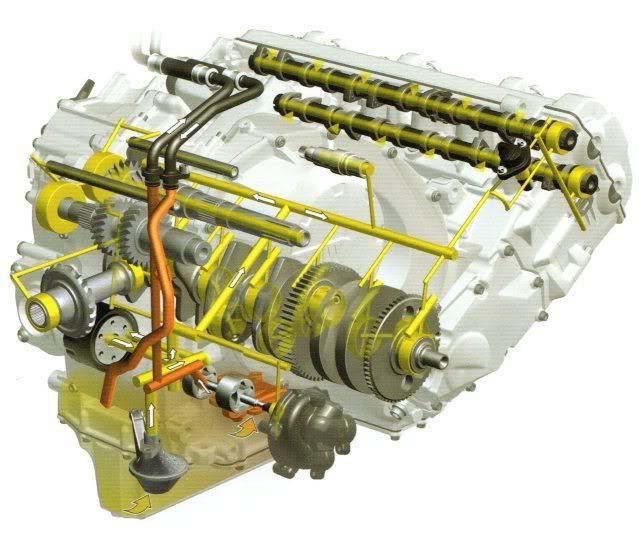Technical Aspects: Wet Sump Lubrication
ಫೆಬ್ರವಾರಿ 24, 2016 05:59 pm sahib ಮೂಲಕ ಮಾರ್ಪಡಿಸಲಾಗಿದೆ
- ಕಾಮೆಂಟ್ ಅನ್ನು ಬರೆಯಿರಿ

In this type of lubrication system, oil is stored in an oil sump instead of a separate oil tank as in dry sump system. Due to its simple setup and low manufacturing cost, it is used in most automotive applications today. The temperature of the lubricant oil reaches to very high levels, as it is stored within the hot engine casing and hence it is more difficult to keep it under control.
Technical Facts:
1. This system uses only one oil pump which feeds oil (stored in oil sump) under pressure to all the moving parts and bearings of the engine. Baffles are present in oil pan to direct oil into the pump through the strainer.
2. Oil strainers remove the unwanted particles from oil before supplying it to the engine parts.
3. The oil is drained back to the sump under gravity, where oil pump picks it again and re-circulates it back to all the parts needing lubrication.
4. The oil pump is built into the internal structure of the engine and the filter is attached to the outside of the engine casing. Splash lubrication is one of the types of wet sump lubrication.

Advantages:
- Fewer components with no external oil lines carrying oil.
- Low-cost, light weight.
Disadvantages:
- The oil becomes contaminated and oxidizes more easily under hot conditions within the engine.
- The oil is subjected to a very high temperature within the hot engine casing and hence the temperature of oil is difficult to control.
- The oil supply is limited by the sump capacity.
Watch this video for better understanding of Wet sump lubrication:
Also Read: Technical Aspects: Dry Sump Lubrication















